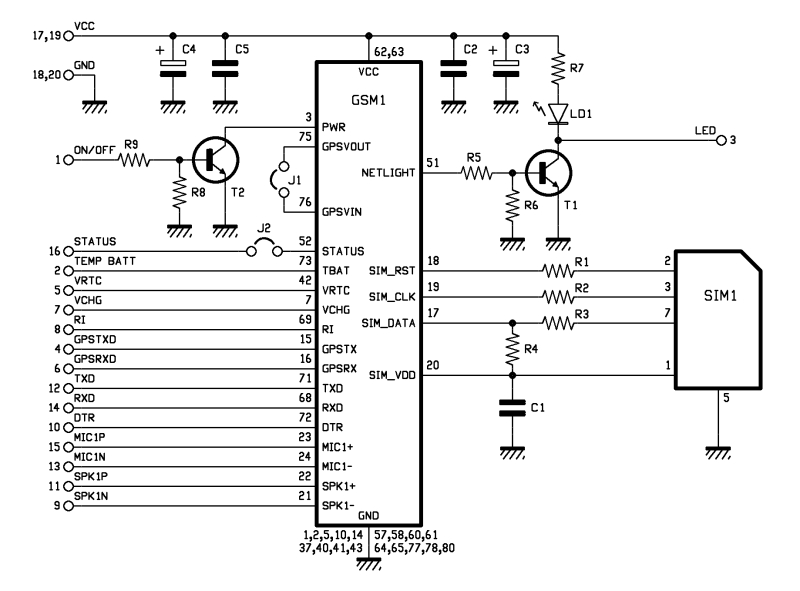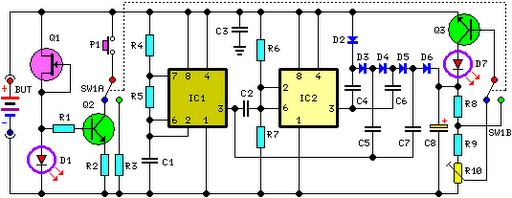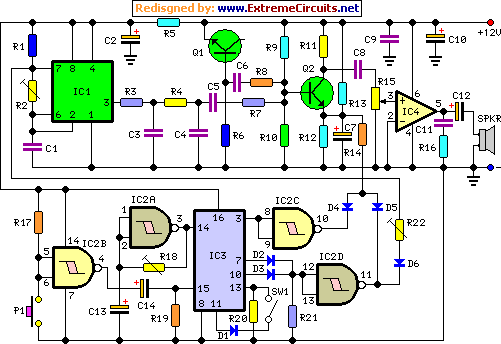
Voice lamp FC52 schematic

The voice-activated lamp circuit consists of an operational amplifier FC52, a flip-flop made from two NAND gates TMY23A, a relay J, a piezoelectric crystal speaker Y, and additional components. The flip-flop processes the sound signal from the speaker, converting it into an electrical signal. The FC52 functions as a high-gain amplifier, capable of amplifying audio signals. When a clapping sound occurs, the speaker converts the sound into an electrical signal, which is then fed into the inverting input of the FC52 for amplification. The amplified output pulses are sent to the flip-flop, causing it to toggle its state. The initial state is 0V (off), and a clap changes it to a 3.5V state (on). A subsequent clap toggles it back to the 0V state. When the flip-flop output is high, the associated transistor 3DG12 conducts, activating the relay, which powers the lamp. Conversely, when the flip-flop output is low, the lamp turns off. The circuit uses a small relay JRX13 or DZ100 series, powered by a 9V supply. A zero potentiometer W1 connected to the FC52 adjusts the output DC potential, thereby controlling the output pulse amplitude, which in turn adjusts the sensitivity. The circuit's sensitivity must be calibrated to prevent the lamp from being triggered by minor sounds. This voice-activated lamp circuit is designed for high sensitivity; upon entering a room, a clap will turn on the lights, and another clap will turn them off.
The voice-activated lamp circuit utilizes a combination of analog and digital components to achieve its functionality. The operational amplifier FC52 is a key element, designed to amplify low-level audio signals from the piezoelectric speaker. The speaker converts acoustic energy from claps into electrical signals, which the amplifier processes. The high gain of the FC52 ensures that even soft claps can be detected, making the circuit responsive to user commands.
The flip-flop, constructed using two NAND gates (TMY23A), serves as a bistable multivibrator. It maintains its output state until triggered by an input pulse. This characteristic is essential for the lamp's on/off functionality, allowing it to remain in the last activated state until the next trigger is received. The output from the flip-flop drives the transistor 3DG12, which acts as a switch to control the relay. The relay, when energized, connects the lamp to the power supply, illuminating it in response to the clapping sound.
The choice of relay, such as the JRX13 or DZ100 series, ensures that the circuit can handle the required current and voltage ratings for typical household lamps. The 9V power supply provides adequate voltage for the relay and other components while keeping the circuit compact and efficient.
The sensitivity adjustment feature, implemented via the zero potentiometer W1, is crucial for the reliable operation of the circuit. By adjusting the DC output potential of the FC52, the user can fine-tune the circuit's responsiveness to ambient noise levels. This prevents false triggering from minor sounds, ensuring that the lamp only activates in response to intentional claps.
In summary, this voice-activated lamp circuit exemplifies an effective integration of electronic components to create a user-friendly lighting solution. Its design prioritizes sensitivity and reliability, allowing for seamless interaction between the user and the lighting system. As shown for the voice-activated lamp circuit. The circuit consists of an operational amplifier FC52, flip-flop, the relay J, a piezoelectric crystal speaker y and other compon ents. Wherein the flip-flop by the two NAND gates TMY23A composition, the speaker can sound signal into an electrical signal Y work. FC52 press into a high sugar gain amplifier capable of amplifying an audio signal.When the clapping sound, Y sound signals into electrical signals, and added to the inverting input FC52 to be amplified.
The amplified output pulses and added to the flip-flop, flip to make it happen, and each time the trigger pulse to trigger flip again. Let the original state 0 state (0V), clap your hands after flipping 1 state (3.5V); take another look at the hand, then flipped back to 0 state.
When the trigger output is high, the corresponding transistor 3DG12 conduction, the relay pull, turn the power lamp, lamp light; on the contrary, when the flip-flop output is low, the lamp is off.Circuit relay J 9V available small relay JRX13 or DZ100 series. Zero potentiometer W1 FC52 used to adjust the output of the DC potential, thereby adjusting the output pulse amplitude, ie adjust the sensitivity.
Sensitivity of the circuit should not be too high, otherwise the slightest sound, lights will be on or off.The voice-activated lamp circuit has high sensitivity voice, when entered the room, just clap your hands, interior lights will automatically light up; your hands to make another, and lights automatically turn off.
The voice-activated lamp circuit utilizes a combination of analog and digital components to achieve its functionality. The operational amplifier FC52 is a key element, designed to amplify low-level audio signals from the piezoelectric speaker. The speaker converts acoustic energy from claps into electrical signals, which the amplifier processes. The high gain of the FC52 ensures that even soft claps can be detected, making the circuit responsive to user commands.
The flip-flop, constructed using two NAND gates (TMY23A), serves as a bistable multivibrator. It maintains its output state until triggered by an input pulse. This characteristic is essential for the lamp's on/off functionality, allowing it to remain in the last activated state until the next trigger is received. The output from the flip-flop drives the transistor 3DG12, which acts as a switch to control the relay. The relay, when energized, connects the lamp to the power supply, illuminating it in response to the clapping sound.
The choice of relay, such as the JRX13 or DZ100 series, ensures that the circuit can handle the required current and voltage ratings for typical household lamps. The 9V power supply provides adequate voltage for the relay and other components while keeping the circuit compact and efficient.
The sensitivity adjustment feature, implemented via the zero potentiometer W1, is crucial for the reliable operation of the circuit. By adjusting the DC output potential of the FC52, the user can fine-tune the circuit's responsiveness to ambient noise levels. This prevents false triggering from minor sounds, ensuring that the lamp only activates in response to intentional claps.
In summary, this voice-activated lamp circuit exemplifies an effective integration of electronic components to create a user-friendly lighting solution. Its design prioritizes sensitivity and reliability, allowing for seamless interaction between the user and the lighting system. As shown for the voice-activated lamp circuit. The circuit consists of an operational amplifier FC52, flip-flop, the relay J, a piezoelectric crystal speaker y and other compon ents. Wherein the flip-flop by the two NAND gates TMY23A composition, the speaker can sound signal into an electrical signal Y work. FC52 press into a high sugar gain amplifier capable of amplifying an audio signal.When the clapping sound, Y sound signals into electrical signals, and added to the inverting input FC52 to be amplified.
The amplified output pulses and added to the flip-flop, flip to make it happen, and each time the trigger pulse to trigger flip again. Let the original state 0 state (0V), clap your hands after flipping 1 state (3.5V); take another look at the hand, then flipped back to 0 state.
When the trigger output is high, the corresponding transistor 3DG12 conduction, the relay pull, turn the power lamp, lamp light; on the contrary, when the flip-flop output is low, the lamp is off.Circuit relay J 9V available small relay JRX13 or DZ100 series. Zero potentiometer W1 FC52 used to adjust the output of the DC potential, thereby adjusting the output pulse amplitude, ie adjust the sensitivity.
Sensitivity of the circuit should not be too high, otherwise the slightest sound, lights will be on or off.The voice-activated lamp circuit has high sensitivity voice, when entered the room, just clap your hands, interior lights will automatically light up; your hands to make another, and lights automatically turn off.





